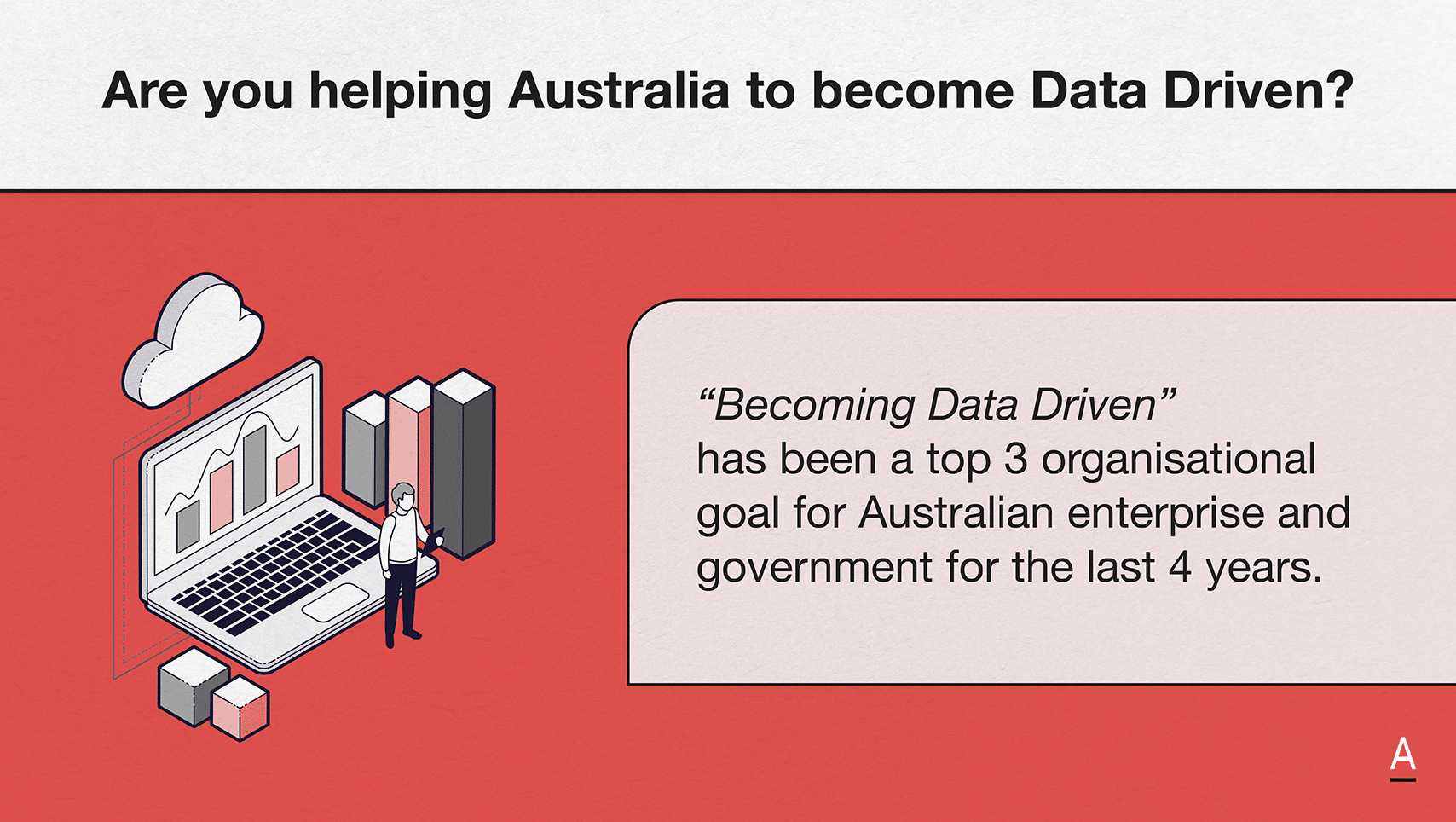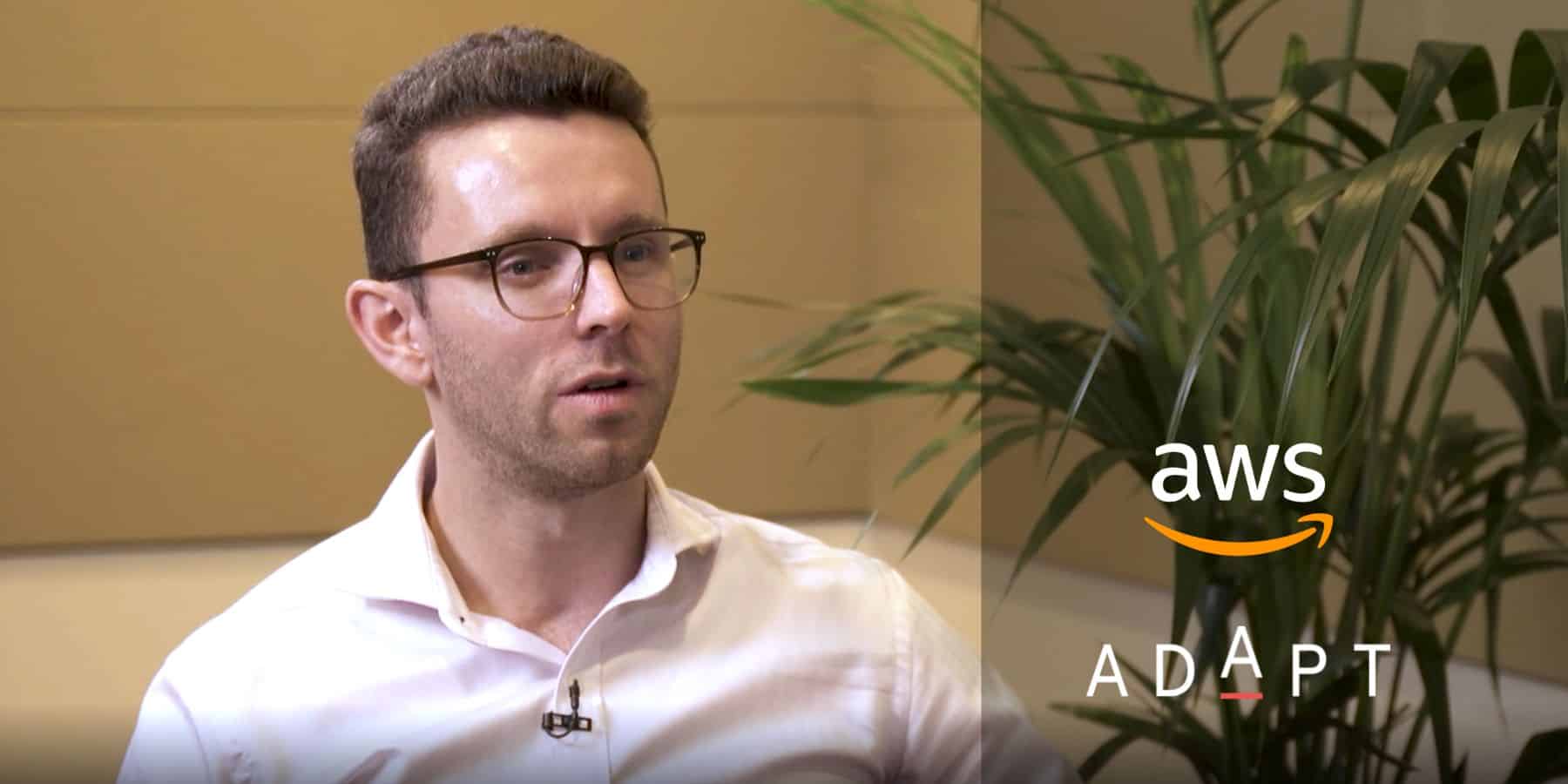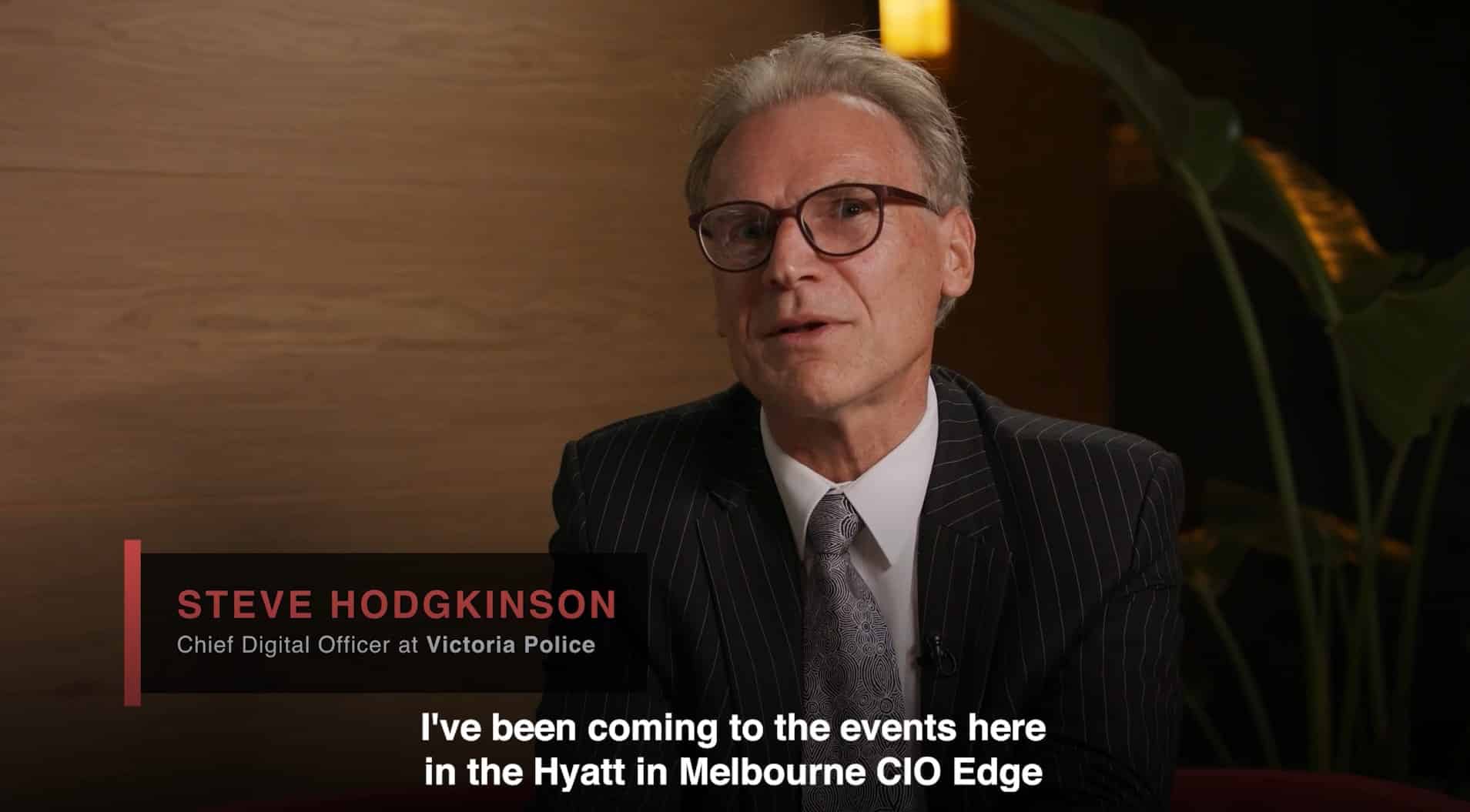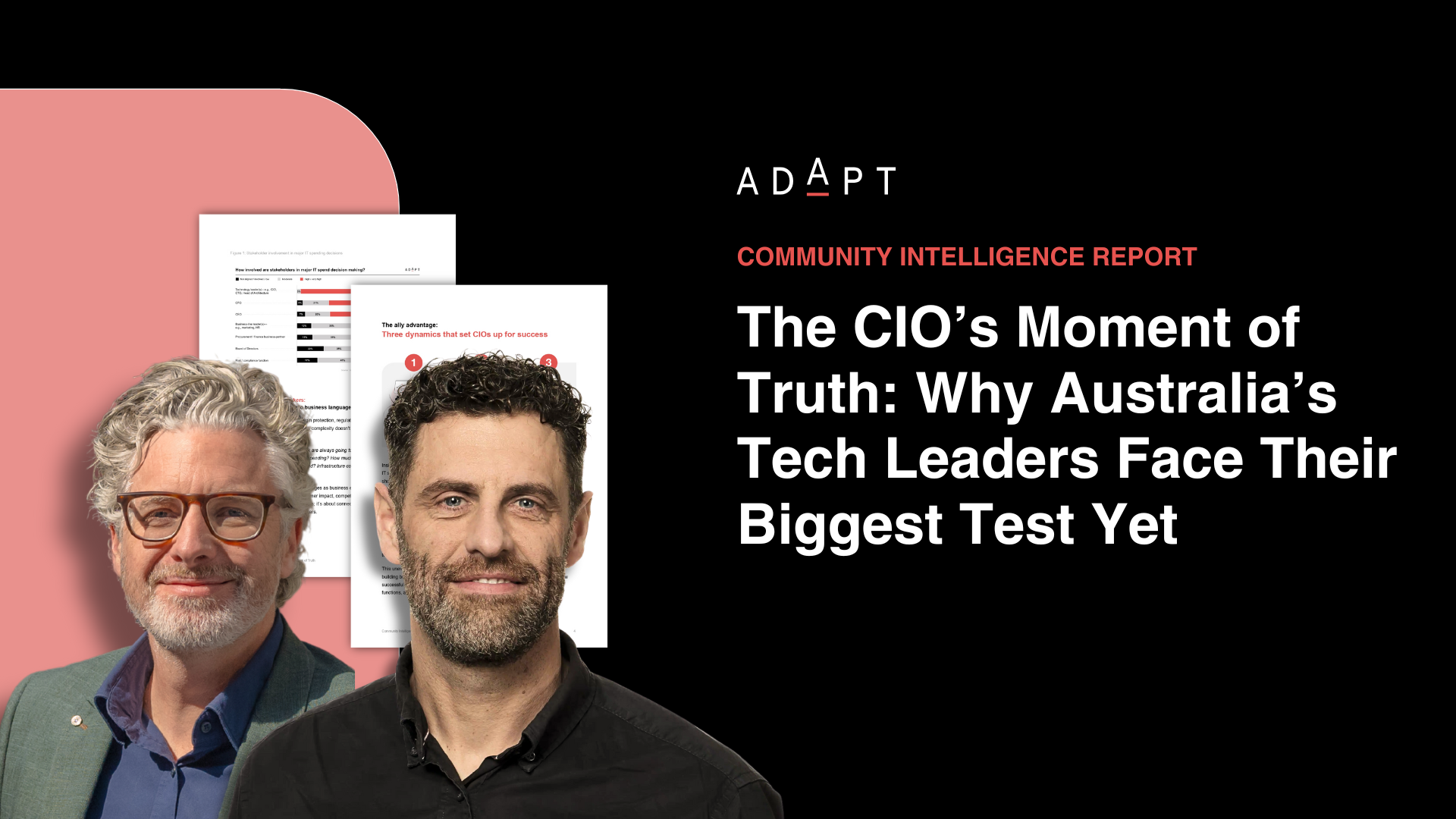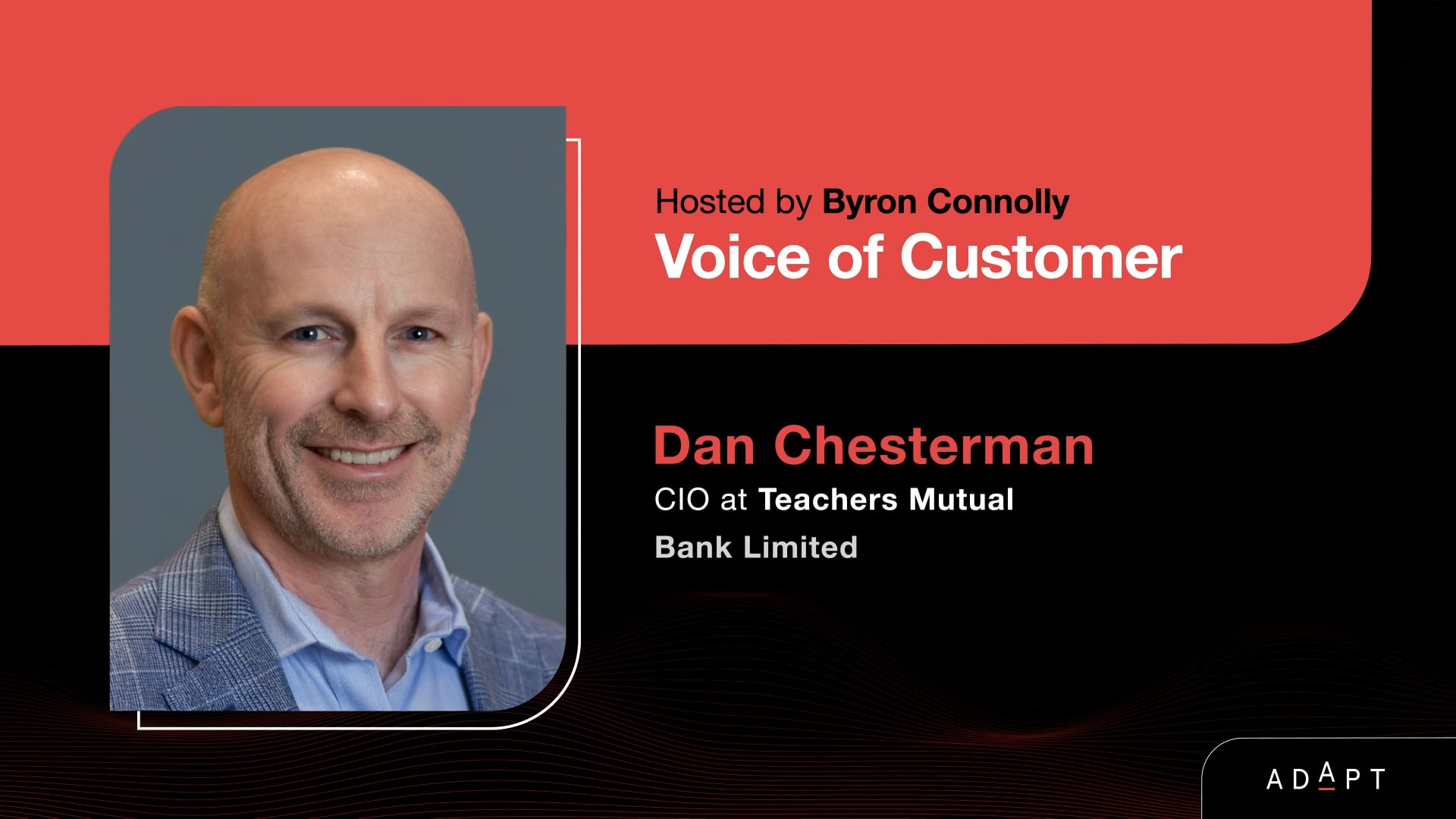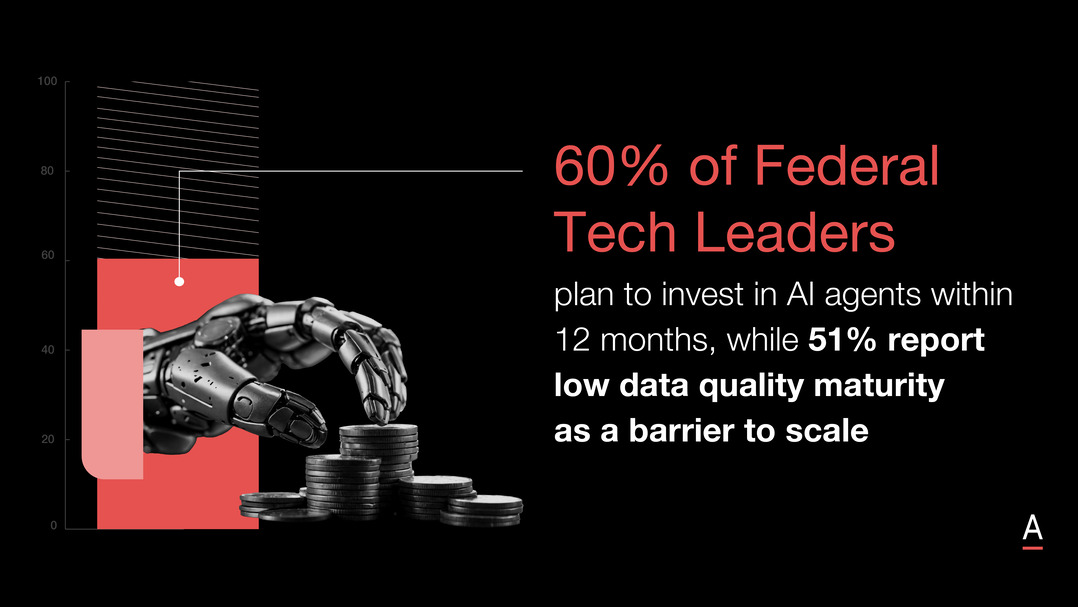How are Australian CIOs driving role-defining initiatives through proven value and strategic influence?
At CIO Network Effect, Aussie IT execs explore how to prove value, secure executive alignment, and lead technology initiatives that drive measurable business outcomes.
At CIO Network Effect, Aussie IT execs explore how to prove value, secure executive alignment, and lead technology initiatives that drive measurable business outcomes.
In a year marked by shifting executive priorities, tighter budgets, and accelerating AI adoption, Australian technology leaders are under growing pressure to prove tangible business value from every initiative.
CIOs are expected to strengthen collaboration across the enterprise, justify investment to increasingly hands-on CFOs, and deliver outcomes that reinforce technology’s role in driving growth and efficiency.
To explore how they are achieving this balance, ADAPT’s recent CIO Network Effect gathered senior technology leaders to examine how CIOs are securing executive buy-in, maintaining alignment through leadership change, and elevating their strategic influence by linking technology to measurable business outcomes.
Evolving transformation through continuous delivery
Opening the session, Anthony Saba, Executive Director of Research & Advisory at ADAPT, shared insights from ADAPT’s research with more than 1,400 Australian executives.
While many enterprises are pursuing digital maturity, 41% of mission-critical applications still rely on legacy systems, and data quality remains the most common barrier to progress.
He explained that growth has overtaken modernisation as the leading strategic focus, showing how organisations are now prioritising value creation over foundational upgrades.
This shift reflects an environment where technology teams must continue modernising infrastructure while proving direct business impact.
Transformation has become a state of ongoing improvement rather than a program with an endpoint.
Claudine Ogilvie, former CIO at Jetstar and APAC Tech Executive for Compass Group, described transformation as a continuous process guided by measurable outcomes rather than static milestones.
She observed that cultural alignment often determines the success or failure of major initiatives.
Many CIOs now see culture ahead of funding as their primary barrier, underscoring that even the best technology roadmaps stall without shared commitment across leadership teams.
Michael Salas, Chief Information and Digital Officer at BAE Systems Australia, added that transformation within his organisation emerged organically through years of incremental progress.
Multiple initiatives, each delivering specific business results, compounded into a broader change that was recognised as transformational only in hindsight.
He noted that consistency and alignment matter more than labels or slogans.
Their perspectives reinforced that effective transformation depends on sustained delivery, adaptability, and the ability to link every initiative back to measurable business outcomes.
Earning trust and influence amid leadership change
The discussion turned to how CIOs sustain alignment when leadership shifts occur.
Michael reflected on navigating multiple CEO transitions, each introducing new expectations and strategic directions.
He explained that continuity relies on trust, adaptability, and clear communication.
CIOs must translate technology outcomes into business terms that remain relevant regardless of who occupies the executive seat.
Claudine agreed that resistance within leadership teams often stems from misaligned understanding rather than opposition.
She encouraged CIOs to connect initiatives to executive key performance indicators, helping peers see how technology enables their individual goals.
ADAPT’s research supported this need for alignment: Anthony revealed that 61% of CFOs are now directly involved in technology investment decisions.
This growing scrutiny from finance leaders has made evidence of impact essential.
Michael shared an example from BAE Systems, where a co-pilot pilot program provided structured training to 10% of employees and delivered an average three hours saved per week per person.
When the results were presented in business terms, showing how reclaimed time could be redirected toward high-value work, the initiative gained rapid executive sponsorship.
During open discussion, participants raised how smaller organisations or nonprofits can justify similar investments with limited resources.
Claudine advised that value cases should be framed through mission outcomes rather than scale, starting small to build credibility and trust.
Attendees also discussed how AI adoption often underperforms because of readiness gaps in data quality and governance.
Several CIOs noted that the real productivity gains come not from automation alone but from redesigning processes around AI capabilities.
Both panellists agreed that credibility compounds through delivery.
Consistently achieving small, visible wins builds the trust required for larger, riskier initiatives to turn execution into influence.
Communicating value and elevating leadership
As conversation moved to the evolving role of the CIO, Claudine reflected on how technology leadership has expanded beyond operational oversight into business strategy.
Today’s CIOs act as integrators, connecting technology, data, and commercial goals to drive enterprise performance.
She highlighted the growing need for digital literacy across all departments, noting that AI and automation now touch every function and require shared understanding.
Michael added that embedding digital initiatives within business-led strategies ensures ownership and accountability.
When divisional leaders present technology outcomes as part of their operational goals, technology becomes inseparable from business performance.
He described how improving literacy and governance within AI programs at BAE Systems has allowed business leaders to engage confidently with technology decisions, reducing resistance and improving adoption.
Audience questions around cybersecurity education further illustrated this point.
One executive described the success of gamified awareness campaigns that turned compliance into friendly competition, achieving over 90% staff engagement.
The example resonated with the group as a reminder that measurable engagement, rather than top-down enforcement, is the foundation of cultural change.
Both Claudine and Michael observed that as technology becomes embedded across every business domain, communication and confidence are defining leadership traits.
Australian leaders tend to understate their achievements, but effective CIOs, they said, must actively articulate the impact of their teams’ work to sustain visibility and influence.
Redefining the CIO as a business catalyst
Transformation is a sustained discipline built on consistency, measurement, and continuous alignment with business goals.
CIOs who align technology with growth, communicate outcomes in business language, and lead through influence rather than authority are defining the next phase of enterprise leadership in Australia.
As the conversation closed, participants agreed that delivering consistent value, strengthening trust across executives, and building organisational readiness for AI-driven change are now the hallmarks of effective CIO leadership.
The ability to connect technology strategy to measurable business outcomes is what distinguishes today’s CIOs as catalysts for enduring change.




